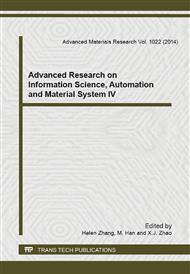[1]
YANG Xiaobo, Badcockt K. J, Richards B. E., et al. A numerical study of hypersonic turbulent film cooling [C]. 43rd AIAA Aerospace Sciences Meeting and Exhibit. Reno, Nevada, AIAA 2005-386 (2005).
DOI: 10.2514/6.2005-386
Google Scholar
[2]
F Seiler, J Srulijes, M Gimenez Pastor, P Mangold. Heat fluxes inside a cavity placed at the nose of a projectile measured in a shock tunnel at Mach 4. 5 [J]. New Res. in Num. and Exp. Fluid Mech., VI, NNFM96 (2007) 309-316.
DOI: 10.1007/978-3-540-74460-3_38
Google Scholar
[3]
Mehta R. C. Numerical heat transfer study over spiked-blunt bodies at Mach 6.80 [R]. AIAA 2000-0344 (2000).
DOI: 10.2514/6.2000-344
Google Scholar
[4]
Hayashi K, Aso S, Tani Y. Numerical study of thermal protection system by opposing jet [R]. AIAA 2005-188 (2005).
DOI: 10.2514/6.2005-188
Google Scholar
[5]
Hai-Bo Lu, Wei-Qiang Liu, Cooling efficiency investigation of forward-facing cavity and opposing jet combinatorial thermal protection system, Acta Phys. Sin. 61(2012) 064703.
DOI: 10.7498/aps.61.064703
Google Scholar
[6]
Hai-bo Lu, Wei-qiang Liu, Forward-facing Cavity and Opposing Jet Combined Thermal Protection System, Thermophysics and Aeromechanics, 19(2012) 561-569.
DOI: 10.1134/s086986431204004x
Google Scholar
[7]
Lu Haibo, Liu Weiqiang, Investigation of thermal protection system by forward-facing cavity and opposing jet combinatorial configuration, Chinese Journal of Aeronautics, 26(2013) 287-293.
DOI: 10.1016/j.cja.2013.02.005
Google Scholar
[8]
Hai-Bo Lu, Wei-Qiang Liu, Research on thermal protection mechanism of forward-facing cavity and opposing jet combinatorial thermal protection system, Heat Mass Transfer 50(2014) 449-456.
DOI: 10.1007/s00231-013-1247-3
Google Scholar


